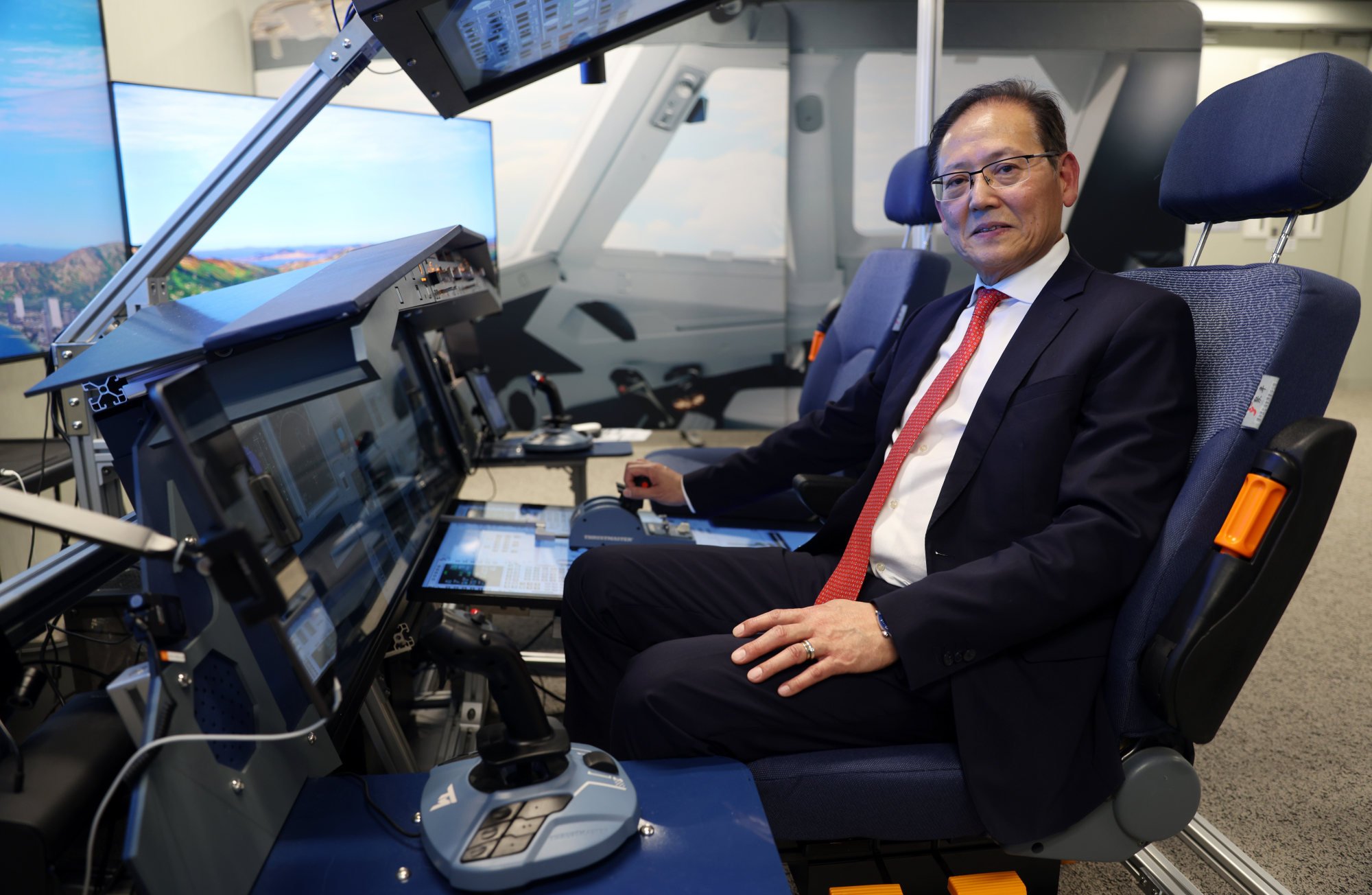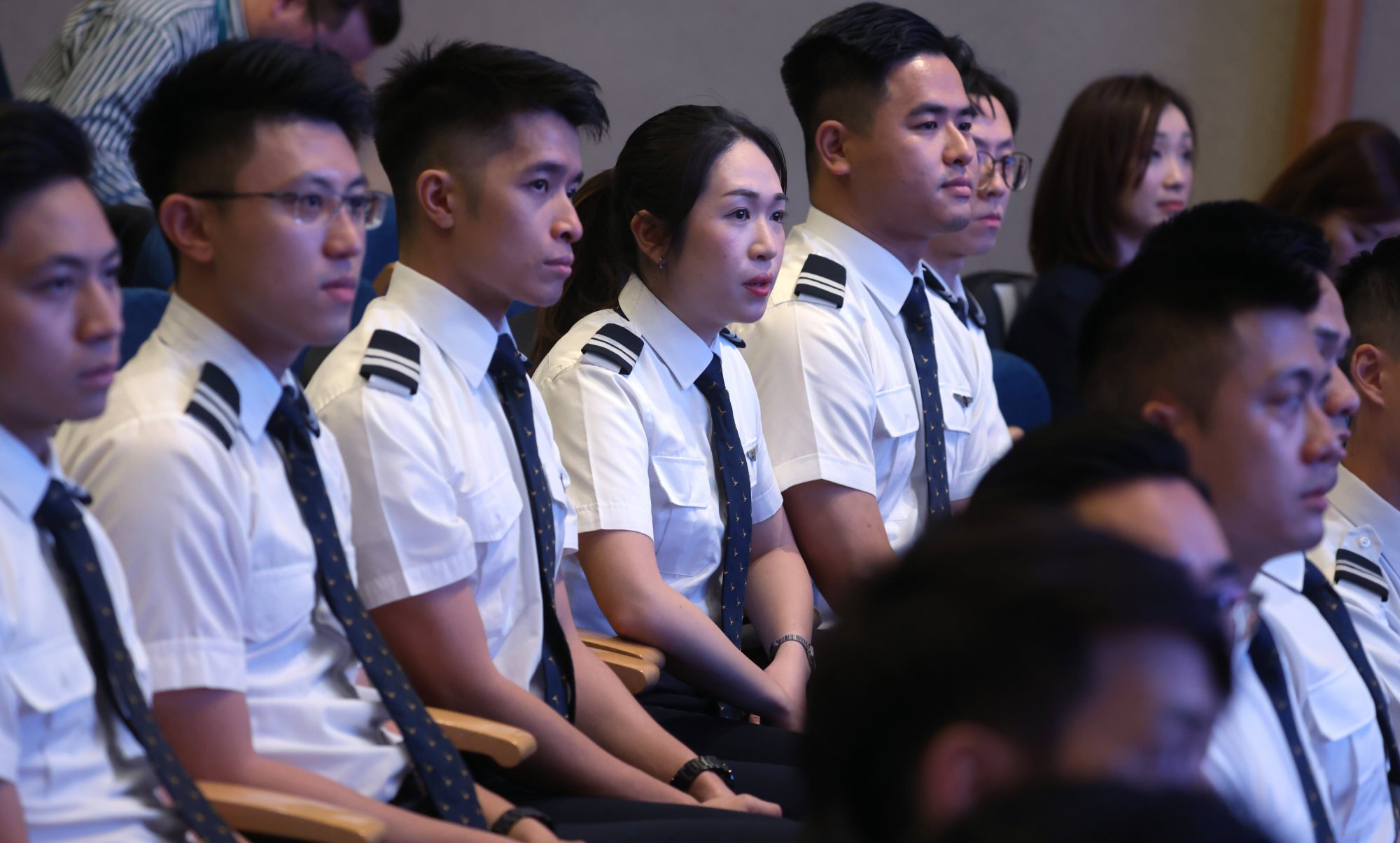A pilot training school run by the Airport Authority Hong Kong is hoping to work with banks and partnering airlines to ease the training fee burden for cadets as part of efforts to meet the growing demand for talent.
Simon Li Tin-chu, president of the Hong Kong International Aviation Academy, acknowledged tuition fees of HK$800,000 (US$102,500) posed a challenge for aspiring pilots, with the school to identify loan options to help support cadets.
The self-financed training programme was approved by the Civil Aviation Department earlier this year, with its first-ever course starting on November 6 and running for 14 months.
Do you have questions about the biggest topics and trends from around the world? Get the answers with SCMP Knowledge, our new platform of curated content with explainers, FAQs, analyses and infographics brought to you by our award-winning team.

The school aims to foster 100 local cadets each year to work with partners Hong Kong Airlines, HK Express and Greater Bay Airlines.
“Airlines require trainees participating in their cadet programmes to repay the training costs to the company in the future,” he said earlier this month. “For this course, we are still liaising with banks and partnered airlines to help them financially, instead of paying the full amount upfront.”
After passing an aptitude test, interviews and a medical assessment, cadets must undertake six months of studies in Hong Kong and another eight months of flight practice in the United States.
Towards the end of the course, the school also organises preliminary interviews for trainees with the three partnered airlines to help provide conditional job offers.
Cadets must also take a two-week multi-crew cooperation course before they can earn a Hong Kong Commercial Pilot Licence with Instrument Rating (Airplane).
Hong Kong academy aims to be first to train both local and mainland pilots
Academy president Li said Hong Kong-based training ensured local accreditation and helped to cut accommodation costs for trainees, with the overall fees being about 20 per cent lower than those offered overseas.
Over in the United Kingdom, the L3 Harris Academy’s course to secure a UK and EU commercial pilot license costs £106,560 (HK$1.06 million).
The school in Hong Kong has received 60 applications since the selection process started in September and accepted 29, of which 17 had started classes in November.
Six of the successful applicants will join a second class starting on February 19 of next year.
Another 18 candidates are still awaiting selection results.
Hong Kong ‘aims to increase flight links to more belt and road countries’
Jack Ip Yun-hung, the academy’s director of flight training and engineering, said the so-called financial “break-even point” varied for graduates depending on how determined and hardworking they were.
“The payment structure for the industry is based on performance, where pilots receive a base salary and additional pay per flying hour,” he said.
“The more you fly, the more you earn. It all depends on their willingness to walk the extra mile, or I should say, to fly the extra hour.
“The ones who accumulate more flight hours will get promoted faster. Some can progress from second officer to captain in less than eight years, which is considered a relatively fast advancement.”
First batch of Hong Kong Cathay Pacific pilots graduates from training scheme
Ip, who became Hong Kong’s first-ever Chinese captain in 1994, said he believed the trainees, who invested in the tuition and gave up their past careers in pursuit of their dreams would excel.
The local aviation industry is contending with a rebound in travel demand after three years of the coronavirus pandemic.
Manufacturer Boeing earlier estimated that 649,000 new pilots would be needed by 2042 to support the global commercial fleet.
Earlier this month, 21 trainees graduated from Cathay Pacific Airways’ integrated programme. The course lasted about 75 weeks and included teaching in the city, the US and Australia. The airline aims to recruit 800 this year and in 2024.

Law Cheung-kwok, senior adviser for the Aviation Research and Policy Centre at the Chinese University of Hong Kong, said training local pilots was of great help to young people in terms of career opportunities and alleviating the pilot shortage.
“But solving the global pilot shortage cannot be achieved overnight,” he said.
“It also depends on whether airlines have a sufficient number of aircraft. Launching more courses with more students won’t be effective if there are not enough aircraft for them to fly.”
Hong Kong’s hi-tech helicopter simulator to cut government pilots’ training time
Hong Kong Aircrew Officers Association chairman Paul Weatherilt described the self-financing course as a new option for aspiring pilots and could create competition for the airline-run cadet programmes.
“It’s a different model in which graduates have a choice of which airline they want to go to because they have already paid off the tuition,” he said.
“As for pilots joining the airlines’ programme like the one from Cathay or British Airways, they have work until paying off the training cost through deductions to their salary.”
The course could also bring in fresh talent and help alleviate the demand for pilots, the association chair said, adding that airline-run programmes could still prove attractive for those seeking greater exposure to different fleet types and locations.
More from South China Morning Post:
- First batch of Hong Kong Cathay Pacific pilots graduates from 75-week integrated training programme
- Hong Kong government pilots fly into eye of typhoons to better understand their secrets
For the latest news from the South China Morning Post download our mobile app. Copyright 2023.





